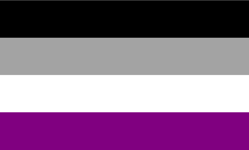LGBT Terms and Flags!
- Warwick Sexpression

- Nov 25, 2018
- 3 min read
It is important to note that even thought many people may use the same term, their experiences and self-definitions of their identity can wildly differ. If someone uses a term that you are unsure of, the best thing to do is ask them politely to explain it and keep an open mind when listening.
The gay/LGBT flag: This is a flag that can be used to represent everyone who is LGBT and can also be used specifically for gay people. The brown and black stripes are a recently suggested addition to include the LGBT people of colour that are often marginalised within the LGBT community and erased from our history.

The bisexual flag: Bisexuality is attraction to two genders. These two genders are commonly binary male and female, but bisexual can be used to describe attraction to any two genders. Contrary to popular belief, the pink represents same-gender attraction, the blue represents opposite-gender attraction, and the purple represents both attractions.

The pansexual flag: Pansexuality is attraction to all genders, including non-binary genders. Pansexuality and bisexuality are very similar, but it is important to note their differences.

The asexual flag: Asexuality is the lack of sexual attraction. Asexual people can have a sex drive or be sex-repulsed, or anything inbetween, but they will not experience sexual attraction. They still experience romantic attraction, unless they are also aromantic. The opposite of asexual is allosexual.

The demisexual flag: Demisexuality is the lack of sexual attraction until a close bond has been made with someone. The black triangle can be added to the flag of any orientation to signify demisexuality within that orientation.

The aromantic flag: Aromanticism is the lack of romantic attraction. Romantic attraction includes wanting to be intimate with another person without sex. Aromantic people will still experience sexual attraction unless they are also asexual.

The grey/graysexual flag: A greysexual person may sometimes experience sexual attraction, and sometimes not. It can also be used to describe someone who is unsure of what attraction they experience. In essence, sexual attraction is a grey area for the person.

The polyamory flag: Polyamory is when a relationship contains more than two people, with the knowledge and consent of everyone involved.

The transgender flag: Transgender is when a person’s gender is not the same as their biological sex. It can also be written as trans*, which is intended to include non-binary genders, but this is unnecessary as the word trans already includes them.

The non-binary flag: Non-binary (also seen as nonbinary) is typically an umbrella term to define all gender identities that are not 100% binary male or female, though some people use it to describe their gender identity.

The genderqueer flag: Genderqueer is similar to non-binary, and can also be used as an umbrella term, however, it may be more commonly used by those who are unsure of their gender.

The genderfluid flag: Genderfluid people find that their gender can change from time to time, therefore their gender is fluid. A person’s gender identity can change throughout their lifetime, but genderfluid is used when that change is more often, typically day to day. The person’s gender can shift through many different genders or only a few.

The agender flag: Agender is a term used for two identities, one being a gender that is completely neutral and the other being the lack of gender. Another term for this is neutrois.

The demigender flag: Demigender is an umbrella term for any gender that a person has a partial connection with. This includes demiboy (for which the yellow in the flag is blue) and demigirl (for which it is pink), but can also include terms such as demifluid, where one part of someone’s gender is fixed and the other is fluid.

The genderflux flag: Genderflux is used when a person’s gender fluctuates in its intensity. The suffix “-flux” can be added to other gender identities to signify this.

The intersex flag: Intersex people are born with variations in their sex characteristics. This includes chromosomes, sex hormones and genitalia that do not officially fit in the typical definitions of female or male.




Comments